Posts Tagged ‘Picture Book Spotlight’
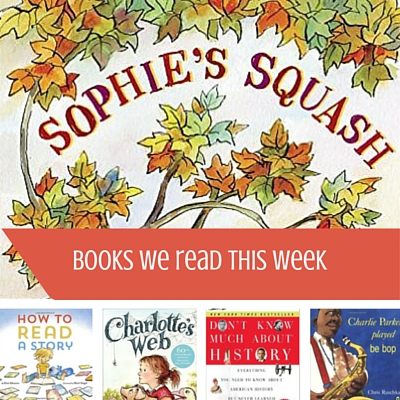
 Sophie’s Squash by Pat Zietlow Miller & Anne Wilsdorf. Read to: my boys.
Sophie’s Squash by Pat Zietlow Miller & Anne Wilsdorf. Read to: my boys.
If you only pick up one new picture book for fall, let this be it. Here’s what I wrote in a Picture Book Spotlight post last year:
We first read this absolute gem of a picture book last year during the CYBILs. Fell so utterly in love with it—the lot of us—that a library copy wouldn’t do; we had to have our own. Huck and Rilla were overjoyed when I pulled it out this morning. Sophie’s instant bond with a butternut squash is utterly believable, and not just because Huck formed a similar attachment once upon a time, long before we encountered this book! “Bernice” becomes Sophie’s best friend and closest confidant, all through a bright and beautiful autumn. But as winter approaches, Bernice begins to get a bit squishy about the edges. Sophie’s parents make gentle attempts to convince Sophie it’s time to let her friend go, but since their suggestions involve treating the squash like, you know, a squash, Sophie’s having none of it. Her own solution is sweet and heartwarming, and it makes my kids sigh that contented sigh that means everything has come out exactly right.
 How to Read a Story by Kate Messner, illustrated by Mark Siegel. Read to: my boys.
How to Read a Story by Kate Messner, illustrated by Mark Siegel. Read to: my boys.
Well, I was sure I had posted a video of Huck reading this book last March. He was enchanted by the story from the first—a little step-by-step guide to enjoying a book with your best reading buddy, charmingly illustrated—and one day I caught him reading it out loud to himself, putting in all the voices. ::melt:
(In case the video won’t play for you, here’s a Youtube link.)
 Charlie Parker Played Be Bop by Chris Raschka. Read to: my boys.
Charlie Parker Played Be Bop by Chris Raschka. Read to: my boys.
One of our longtime family favorites. The rhythm and whimsy of the text has captivated each of our small fry in turn. And the art is bold and funny and altogether wonderful.
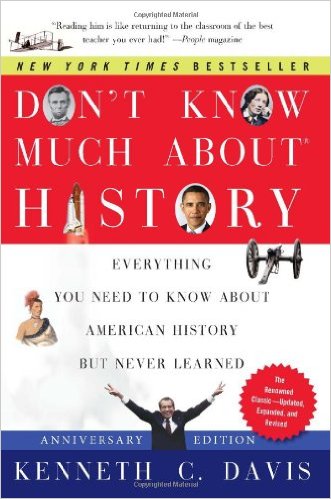 Don’t Know Much About History by Kenneth C. Davis. Read to: the teens.
Don’t Know Much About History by Kenneth C. Davis. Read to: the teens.
Another of the texts Beanie, Rose, and I are using for our 20th-century history studies. We continue to enjoy reading history texts aloud together, which allows us all to stay on the same page (literally) and—even more important—fosters discussion and fruitful rabbit trailing. We try to reserve two 45-minute blocks a week for this, supplementing with other books (including graphic novels, historical fiction, and biographies) and videos.
Poetry:
Walt Whitman, selections from “Song of Myself”
Gwendolyn Brooks, “kitchenette building”
Books Continued from Last Week:
(Rillabooks in the top row)
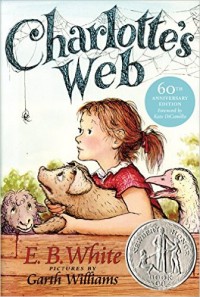

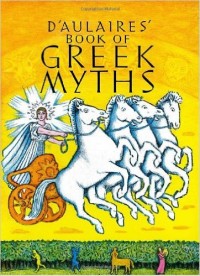
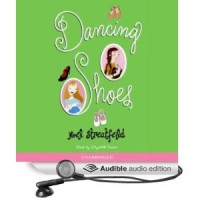


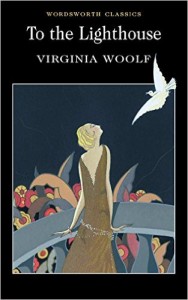
I’m nearing the end of To the Lighthouse and am feeling pretty well shattered. And I sort of want to start it all over from the beginning.
Related:
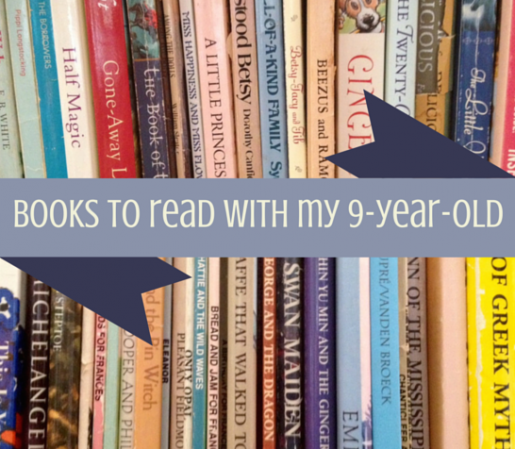

I’m working on the big Huck-book companion to my Rillabooks post, but, well, you can fit a LOT of picture books on a shelf, see? So when I went around the house pulling things for Huck, I wound up with a mammoth amount of books. And of course we’re reading them faster than I can get them catalogued. That Rilla post took me an entire weekend and I expect this one will be no different. In the meantime, here’s a peek at things Huck has particularly enjoyed this week.

 Lifetime: The Amazing Numbers in Animal Lives by Lola M. Schaefer, illustrated by Christopher Silas Neal.
Lifetime: The Amazing Numbers in Animal Lives by Lola M. Schaefer, illustrated by Christopher Silas Neal.
This one landed on our doorstep recently from Chronicle for review. Huck claimed it right out of the package. The concept has fascinated both him and Rilla; it has been requested three times this week. “In one lifetime, this spider will spin 1 papery egg sac.” “In one lifetime, this caribou will grow and shed 10 sets of antlers.”—and on it goes, through many species and an ever-increasing, rather incredible range of numbers. (One seahorse! One THOUSAND babies! And here I thought I had a big family.)
I really love the art—bold yet simple colors against a black background. And you know we are suckers for good nature art around here.

 Dinosaur Dinner (With a Slice of Alligator Pie): Favorite Poems by Dennis Lee, illustrated by Debbie Tilley.
Dinosaur Dinner (With a Slice of Alligator Pie): Favorite Poems by Dennis Lee, illustrated by Debbie Tilley.
Looks like this one has gone out of print, more’s the pity. But there are used copies to be found, or maybe you’ll luck out and your library will have it. A giggle-inducing collection of nonsense poetry (arguably the best kind). I pulled this one out yesterday when a certain someone needed lifting out of a grumpy mood. I expected to read a sampling of the poems, but Huck begged for the whole book. No arm-twisting required.

 Madeline by Ludwig Bemelmans.
Madeline by Ludwig Bemelmans.
Sure, Rilla has heard this one so many times she knows it by heart. But somehow Huck had altogether missed it. This grievous oversight had to be rectified posthaste. He loved it, of course. Kept telling me to slow down so he could study the pictures. Especially “and frowned at the bad.” And that tiger in the zoo, of course. Now, I know no one on the planet needs my recommendation of a book so tried-and-true, but I include it here as a reminder (much-needed in this household) to make sure the smallest fry don’t miss out on all the gems you read one thousand times to older siblings. (Rilla very nearly missed Miss Rumphius this way!)

 The Berenstain Bears’ Big Book of Science and Nature. I thought for sure I’d written about this one at length before. Must have been on a message board, because all I found in the archives was this—from March, 2005! (Oh my heavens.)
The Berenstain Bears’ Big Book of Science and Nature. I thought for sure I’d written about this one at length before. Must have been on a message board, because all I found in the archives was this—from March, 2005! (Oh my heavens.)
Too chilly to stay long. Back inside, the 9yo copied out a passage from Mossflower (a la Bravewriter) while the 6yo practiced piano and I read to the 4yo. She is loving the Berenstain Bears’ Big Book of Nature. Also the Lion Storyteller Bedtime Book (which we never read at bedtime.)
Oh, you guys. Ten years later, those little girls are now so OLD. And here I am still reading the same books to my younger set. Lion Storyteller is on Huck’s shelf this very minute and is slated for my big post. And the paragraph right above the one quoted here, I talk about “our current read-aloud, Ginger Pye.” When we conferred to select a new read-aloud today, that very book was Rilla’s first choice—until she realized I meant a book to read to both her and Huck. For some reason (this comes up now and then) she has zoomed in on Ginger Pye as a book she wants me all to herself for. I grok that impulse. One-on-one time is important when you’re one of six.
(Another tidbit from that old post: I’m giggling at the bit about Jane “settling in to watch a History Channel show about gasoline.” As one does.)
But back to the Berenstains. This Big Book of Science and Nature is tremendously appealing to the four-to-seven crowd (judging by my kids). It explores seasons and nature in an almanac style and is full of the interesting facts. I pulled it out for Huck this morning and he fell into it immediately. I thought I was going to be reading it to him—or with him, at least—but he was so instantly and deeply absorbed that I wound up doing something else. Glad this one is still intact (and a bit surprised, given all the attention it has received over the years).
All right. Back to Giant List-Making.
Related post:

It’s been a while since I did a big fat Rillabooks post. The books are piling up! Literally and figuratively. When I want to blog about a book, I leave it out after we’ve read it. This means:
1) There are stacks of books on every flat surface of this house; and
2) We keep reading those books over and over, because they’re out where we can see them.
Which is fine, because I wouldn’t have had the urge to blog about the book in the first place if it weren’t in some way delightful.
Another thing that’s happening a lot lately is that Huck collects favorite picture books to read in his bed at night. I could probably skip writing about them and just post a picture of his headboard every morning. No stronger recommendation for a children’s book than being made part of a five-year-old’s hoard, is there?
But here, I’ll do a proper post. Kortney, consider this my thank-you note for that lovely write-up the other day. 🙂
NEW:
 Mix It Up by Hervé Tullet. Here’s a book that beckons a child in and invites him to touch and “mix” blobs of color on the page. Drag some red into the yellow blob, and when you turn the page, naturally you’ve got orange. What interested me is how completely Huck entered into the conceit, touching and swirling those painted spots on the page just as if he were playing an iPad game. “Like this?”—tentatively at first, touching the dot as instructed, and then turning the page and crowing in glee at the change. He engaged just as thoroughly as if it were an app, red + yellow magically turning to orange under his finger. This thrills me, I have to say—the willingness to enter into a game of make-believe with a book when so much in his world trains him to expect animations for every cause-and-effect. The book is full of fun, with dots of color skittering across the page as if alive. Gorgeously designed, too: big bold colors against clean white space. We also enjoyed Tullet’s Press Here which similarly invites interaction. At five, Huck seems to be exactly the right age for these books. We’ve read Mix It Up together several times but most often he carts it away to his bed to enjoy solo.
Mix It Up by Hervé Tullet. Here’s a book that beckons a child in and invites him to touch and “mix” blobs of color on the page. Drag some red into the yellow blob, and when you turn the page, naturally you’ve got orange. What interested me is how completely Huck entered into the conceit, touching and swirling those painted spots on the page just as if he were playing an iPad game. “Like this?”—tentatively at first, touching the dot as instructed, and then turning the page and crowing in glee at the change. He engaged just as thoroughly as if it were an app, red + yellow magically turning to orange under his finger. This thrills me, I have to say—the willingness to enter into a game of make-believe with a book when so much in his world trains him to expect animations for every cause-and-effect. The book is full of fun, with dots of color skittering across the page as if alive. Gorgeously designed, too: big bold colors against clean white space. We also enjoyed Tullet’s Press Here which similarly invites interaction. At five, Huck seems to be exactly the right age for these books. We’ve read Mix It Up together several times but most often he carts it away to his bed to enjoy solo.
(You’ll want your watercolors handy after you read this book. Or do as we did and whip up a quick batch of play dough: 2 cups flour, 3/4 cup salt, 1 cup water [add slowly; you may not need all of it]. Knead until it isn’t sticky. I go sparingly on the water and leave a lot of loose flour in the mixing bowl for the kids to rub their hands in before I start handing out lumps of dough. Then, for each lump, a drop of food coloring. They love working it in, watching it marble its way through the blank dough. After the colors are well mixed, I like to add a tiny drop of lavender or cinnamon oil, or a bit of vanilla extract. The smells make them so happy! “I’m probably going to play with this for one or three hours,” Huck informed me when I got him set up the other day—after I’d remembered such a cheap and easy cure for listlessness existed in the world. Why do I forget about this for months at a time? A batch will last in the fridge for about a week. Rilla can measure and mix it by herself. Very handy when, say, an older sister is wrangling with Algebra 2 and needs mom’s attention for a while.)
OLD:
 Borreguita and the Coyote by Verna Aardema, illustrations by Petra Mathers—over and over and over again! Beloved by Rilla too (and all her older siblings before her). Utterly satisfying rendition of a Mexican folk tale in which a clever little sheep outwits, repeatedly, with comic effect, a coyote intent on eating her for dinner. Might I recommend reading this one while lying down so that all of you can stick your legs in the air when you get to the part about Borreguita “holding up” the mountain.
Borreguita and the Coyote by Verna Aardema, illustrations by Petra Mathers—over and over and over again! Beloved by Rilla too (and all her older siblings before her). Utterly satisfying rendition of a Mexican folk tale in which a clever little sheep outwits, repeatedly, with comic effect, a coyote intent on eating her for dinner. Might I recommend reading this one while lying down so that all of you can stick your legs in the air when you get to the part about Borreguita “holding up” the mountain.
 Creepy Castle by John S. Goodall. Out of print but if you can track one down you’re in luck. All six of my kids have loved this book to pieces. No! Not to pieces, fortunately! It’s got flaps inside, each spread flipping to become a new picture. An almost wordless book, which means the kids and I get to narrate the adventure as the two hero mice make their way through a seemingly deserted castle. There’s a sinister fellow hiding in the bushes; he locks them in a scary room with a dragon guarding the stairs, but they climb out the window and splash into the moat. My littles especially like the moment when the villain gets his comeuppance at the end. I can’t count how many dozens of times I have read this little book. They never seem to get tired of it.
Creepy Castle by John S. Goodall. Out of print but if you can track one down you’re in luck. All six of my kids have loved this book to pieces. No! Not to pieces, fortunately! It’s got flaps inside, each spread flipping to become a new picture. An almost wordless book, which means the kids and I get to narrate the adventure as the two hero mice make their way through a seemingly deserted castle. There’s a sinister fellow hiding in the bushes; he locks them in a scary room with a dragon guarding the stairs, but they climb out the window and splash into the moat. My littles especially like the moment when the villain gets his comeuppance at the end. I can’t count how many dozens of times I have read this little book. They never seem to get tired of it.
Another book back in circulation these days is Dinosaur Vs. Bedtime. (Sniffle: two-year-old Huck in that post.)
Meanwhile, I’m making my way through the leeeeennnngggggthy list of Cybils YA nominees and will have some to recommend in a post coming soonish.
Tags: Borreguita and the Coyote, Creepy Castle, Herve Tullet, John S. Goodall, Mix It Up, Petra Mathers, Picture Book Spotlight, picture books, play dough recipe, Rillabooks, Verna Aardema
Here’s a book I thought I’d blogged about before, but it seems I only mentioned it briefly.
by Pat Zietlow Miller, illustrated by Anne Wilsdorf.
We first read this absolute gem of a picture book last year during the CYBILs. Fell so utterly in love with it—the lot of us—that a library copy wouldn’t do; we had to have our own. Huck and Rilla were overjoyed when I pulled it out this morning. Sophie’s instant bond with a butternut squash is utterly believable, and not just because Huck formed a similar attachment once upon a time. “Bernice” becomes Sophie’s best friend and closest confidant, all through a bright and beautiful autumn. But as winter approaches, Bernice begins to get a bit squishy about the edges. Sophie’s parents make gentle attempts to convince Sophie it’s time to let her friend go, but since their suggestions involve treating the squash like, you know, a squash, Sophie’s having none of it. Her own solution is sweet and heartwarming, and it makes my kids sigh that contented sigh that means everything has come out exactly right.
It is Wednesday, isn’t it? I’m off kilter somehow.
 Every now and then one of my littles will shout “ELIZABETH!”—I would say ‘for no apparent reason,’ because it’s always a non sequitur, but there is a reason and it’s very apparent: what they mean is “I want to read My Name Is Elizabeth!“ Elizabeth doesn’t like being called Lizzie, Liz, Beth, or Betsy, and although my two youngest children have short names that don’t lend themselves to nicknaming, they wholly sympathize with Elizabeth’s plight, and approve of her insistence on proper nomenclature.
Every now and then one of my littles will shout “ELIZABETH!”—I would say ‘for no apparent reason,’ because it’s always a non sequitur, but there is a reason and it’s very apparent: what they mean is “I want to read My Name Is Elizabeth!“ Elizabeth doesn’t like being called Lizzie, Liz, Beth, or Betsy, and although my two youngest children have short names that don’t lend themselves to nicknaming, they wholly sympathize with Elizabeth’s plight, and approve of her insistence on proper nomenclature.
(They also approve—heartily—of the exception she makes for her little brother.)
Whenever this book is rediscovered, I seem to be called upon to read it several times a day for a week or so. This has been one of those weeks. I’m not complaining. 🙂
***
Just finished e. lockhart’s We Were Liars. Utterly unsettling. I mean that in a good way. More on it later.
***
And a heads-up for you.
I got an email from FutureLearn about this upcoming course—Literature of the English Country House—and I honest-to-God squealed.
We’ll be using a wide range of texts spanning the history of literature from Thomas More’s ‘Utopia’ to Oscar Wilde’s ‘Canterville Ghost’. Along the way we will examine sections from a play by Shakespeare, poetry by Margaret Cavendish, and brief passages from novels by Jane Austen, and Charles Dickens. We will even look at fiction by a country house resident Georgiana, Duchess of Devonshire.
Starts June 2. Thought you might like to know.
 Mustache Baby by Bridget Heos, illustrated by Joy Ang.
Mustache Baby by Bridget Heos, illustrated by Joy Ang.
Sometimes you just want a book that makes a kid belly laugh. From the moment Baby Billy makes his appearance, mustachioed from the get-go, Huck and Rilla were in stitches. As Billy grows, his mustache makes it easy for him to assume a variety of roles: cowboy, cop, painter, circus ringleader. But beware the toddler with a long, twirly, Snidely Whiplash mustache: you might have a wee villain on your hands. The surprise ending generated the biggest guffaw of all from my small fry. When Huck discovered the book had gone back to the library, he very nearly grew a bad-guy mustache on the spot. Don’t worry—just like Billy, he recovered his good-guy wits before any dastardly deeds were done. Mustache Baby will be making a repeat visit very soon.
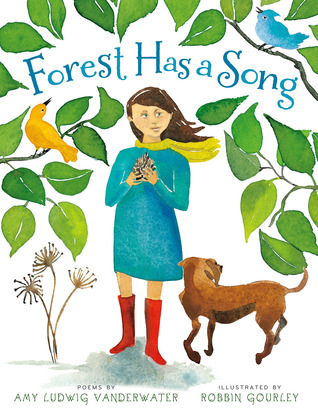
Forest Has a Song by Amy Ludwig VanDerwater, illustrated by Robbin Gourley.
Dear Amy,
My name is Rilla. I am 6. Mommy read Forest Has a Song to me. I think that It Is really pretty poetry and i also think that deer are pretty too. I really love nature. And deer are one of my favorite animals and it said a lot about deer. In the picture of the fiddlehead ferns, I really like the pattern of the colors. And the fossil looks so realistic. When I grow up i want to be an illustrator like Robbin Gourley. And also, i love the Spider poem and the Dusk poem. I love the never-tangling dangling spinner part. And I love baby animals. They’re so cute and fluffy when they’re birds at least.
One of my favorites is “Farewell.” How it says “I am Forest.”
Love,
Rilla

(Doggone spellcheck. She made me correct all her invented spellings—the red dots under her words tipped her off. Then again, “rhille priddy powatre” might have been hard for you to parse. Also, of course, recognizing that a word just looks wrong is a big step toward learning to spell and I can’t very well stand in the way of that progress just because the invented stuff is adorable.)

As for the book, I wholeheartedly agree with Rilla’s review. What a gorgeous, gorgeous volume. The poems sometimes wistful, sometimes whimsical, always lyrical. Beautiful for reading aloud, full of delicious internal rhyme and alliteration. And infectious: I predict a lot of original nature poetry in our future. This collection begs you to take a fresh look at the world around you and see the magic of the curled fern frond, the mushroom spore. Of course I’ve been a fan of Amy Ludwig VanDerwater’s work for years.
I can’t imagine a more perfect pairing for Amy’s poems than Robbin Gourley’s art. Lush watercolors, rich and soft. I kept coming across pages I’d like prints of. Actually, this is exactly the kind of book where you want a second copy for cutting up and framing. (If you can bear to. I always think I’d like to do that, but the one time I actually bought a spare copy for this purpose—Miss Rumphius—I couldn’t, in the end, bring myself to dismantle it.)
Beanie’s favorite poem was “Forest News”—
I stop to read
the Forest News
in mud or fallen snow.
Articles are printed
by critters on the go…
—which she loved for its intriguing animal-tracks descriptions, its sense of fun, and its kinship with her favorite Robert Frost poem, “A Patch of Old Snow.” (“It is speckled with grime as if / Small print overspread it, / The news of a day I’ve forgotten — / If I ever read it,” writes Frost, perusing a somewhat more somber edition of the woodsy chronicle.)
Wonderboy’s favorite was the puffball poem, and he later wrote (in his customary stream-of-consciousness style) this string of impressions the book made on him: “dead branch warning and woodpecker too dusk burrow in a burrow chickadee sit on my hand and come fly here”…
Truly beautiful work, Amy and Robbin.
Related post: The Poem House
Bunch of books have to go back today; before they go, a quick catalog of the ones my gang loved:

 Gideon by Olivier Dunrea, from the Gossie & Friends series.
Gideon by Olivier Dunrea, from the Gossie & Friends series.
Huck enjoyed this short, simple story about a gosling who isn’t quite ready to take his nap. A repeat request, usually as a stall tactic at naptime. 😉 Sweet art; pleasingly small trim size. A good library choice, since Huck, at a month shy of four (eek), is on the top end of the age range this book is likely to appeal to.
A leveled reader that enchanted all three of my youngest. The homey adventures of imaginative twin girls with very different personalities. The making-dumplings chapter is Rilla’s favorite. She’s hoping for more Ling and Ting tales.
This early reader scored especially high with my boys. Huck’s an easy mark: you had him at “Robot.” Wonderboy was amused by the way Robot upended Rabbit’s careful sleepover plans. Plus: Magnetic hands! A lost remote control! A snack of nuts and bolts! And poor, flustered Rabbit, worrying about sticking to his schedule—a character Wonderboy can very much relate to. I might snag a copy of this one to keep.
One of the few Elephant & Piggie books we don’t own, which means we wind up checking it out often.
I’m sneaking Autumn Leaves out of the house after approximately thirty-seven reads.
This is Huck’s current favorite read-aloud. I grabbed it from the library on impulse a couple of weeks ago—we’re short on fall color here, and the cover appealed to me, but I didn’t expect it to grab the three-year-old’s attention. Shows what I know. The kid is smitten. He thinks it’s called “All Dem Leaves.”
The bold images on the cover are a good foretaste of what’s inside. We’ve spent many happy moments poring over these bright leaves, matching their shapes to their names. Turns out we have a lot of sweet gum trees on our street—almost the only sparks of autumnal foliage we see here. (Mind: we’re not complaining. 70-degree weather and soaring blue skies. I’m content to satisfy my fall-color longings with children’s books.)
Rilla’s a fan of the book too—it ties in quite serendipitously to the fun we’ve been having with the Trees of England course over at Memrise. (By golly, I know my horse chestnut from my blackthorn now.)
Most of you probably live in places where the gold and scarlet has been stripped from the branches by now, in late November. (Jiminy crickets, it’s late November. I’m quaking.) This recommendation may come a bit late; we’ll all be in Holly and Ivy mode soon. But if you’re not ready to let go of autumn, you might enjoy a ramble through these colorful woods.

 Sophie’s Squash by Pat Zietlow Miller & Anne Wilsdorf. Read to: my boys.
Sophie’s Squash by Pat Zietlow Miller & Anne Wilsdorf. Read to: my boys. How to Read a Story by Kate Messner, illustrated by Mark Siegel. Read to: my boys.
How to Read a Story by Kate Messner, illustrated by Mark Siegel. Read to: my boys. Charlie Parker Played Be Bop by Chris Raschka. Read to: my boys.
Charlie Parker Played Be Bop by Chris Raschka. Read to: my boys. Don’t Know Much About History by Kenneth C. Davis. Read to: the teens.
Don’t Know Much About History by Kenneth C. Davis. Read to: the teens.























